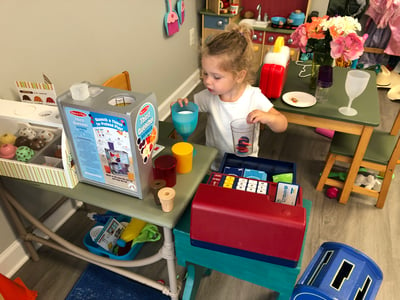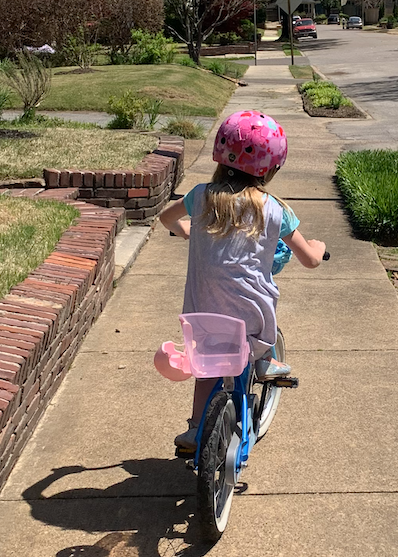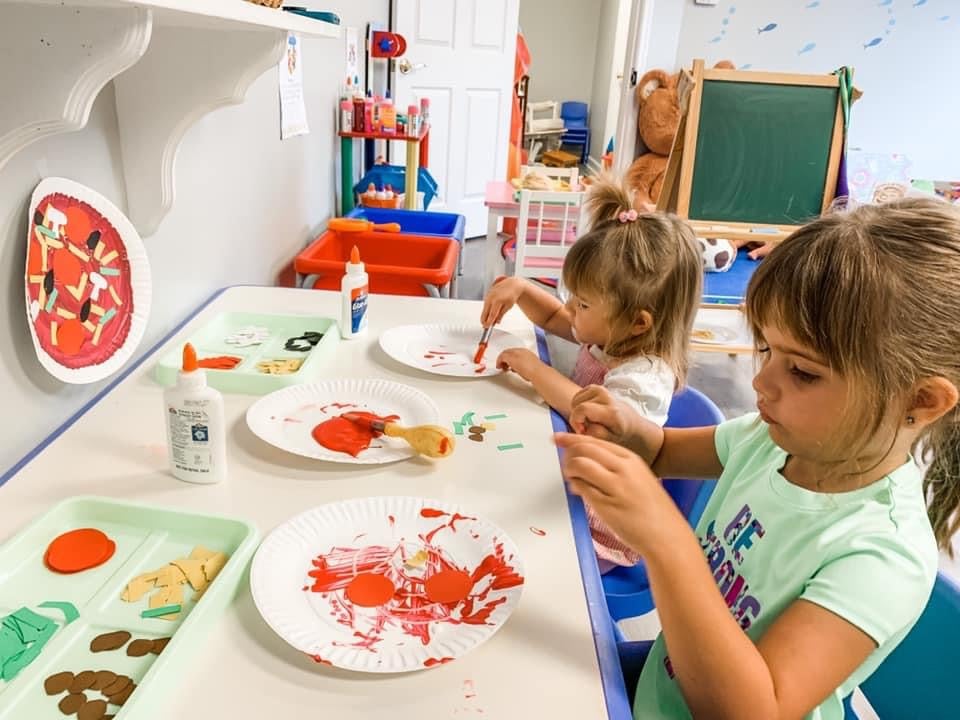
In the CLASS® dimension Regard for Student Perspectives, there is an indicator called Support for Autonomy. This means the ability to self-govern or make your own decisions about what, how, and why you do what you do. I recently have had a life lesson in autonomy.
My oldest daughter just turned 7. Since then, she has been asking me a lot lately: “Why do you make all of the decisions?”
-
-
- Why do you decide what is in my lunch?
- Why do you tell me when I can and can’t watch TV?
- Why do you tell me to clean my room? I’m okay with it being messy.
-
After some validation of her questions and emotions (“Yeah, that stinks that you can’t always do what you want when you want”), we had a discussion about adults needing to set boundaries for safety and well-being (complete with an analogy to the backyard fence to help her understand the word boundaries). Then we started brainstorming ways she can have a little more autonomy.
She already has some autonomy such as deciding what to wear, what books to read, when to take a bath, and whether she will actually eat dinner (any other families feel that pain?!). We also encourage overall responsibility, such as contributing to household chores and taking care of her clothes and toys.
Even so, my daughter was expressing her desire to have a little more control over her daily life. I know that developing her autonomy will help her see herself as a competent person and someone who can take on tasks and challenges as they arise.
How We Increased Autonomy At Home
So here is what we brainstormed:
-
-
- I would set the guidelines for what kinds of foods need to be packed in her lunch. She needs some protein, some
 carbs, some fat, and some fruits / veggies. But she can pick what those are and make her own lunch.
carbs, some fat, and some fruits / veggies. But she can pick what those are and make her own lunch. - Because of the increased amount of screentime with virtual school, we had said no TV during the school week. She negotiated to have 30 mins on Wednesdays because her school is asynchronous that day.
- She has to clean her room once a month for safety and hygiene.
- And the kicker… she can now bike across two streets to go to the neighborhood park all by herself.
- I would set the guidelines for what kinds of foods need to be packed in her lunch. She needs some protein, some
-
She was ecstatic about these new choices she could make on her own. Although when she got back from the park, I asked how it felt and she said, “It was weird to not have a grown up there. Weird, but good”.
Before this whole process, I would have said that my daughter had a lot of choices as most of her play is child-led, but now I realize she was seeking more ways to try out her capabilities. As a parent, letting go can be a little scary. What choices will she make? How will those choices affect her and the rest of the family? How will I scaffold her through the consequences (positive and negative) of those choices?
How To Increase Autonomy At School
We sometimes see this same issue come up in classrooms, especially with younger children. Children may either not be encouraged to have roles and responsibilities in the classroom, the roles may not be meaningful to children, or they aren’t given the chance to really do the job. For example, a teacher may call on a child to lead calendar time, but tell them where to point or hold the pointer for them.
Just like parents, it can be scary for teachers to find ways for children to have more autonomy in the classroom. Children might make mistakes (or messes), tasks can take more time, and taking care of all the other tasks needed to teach a classroom full of preschoolers can be overwhelming. However, when children are given opportunities based on their abilities and readiness, teachers may be surprised at what children are capable of and how it affects the classroom as a whole.
If you are interested in increasing children’s autonomy in the classroom, here are some questions for your reflection.
-
-
- What roles do children have? Can they make all of the decisions related to that role? If not, why? How could they make more decisions and take on more responsibilities?
-
- Example: If they are watering the plants, can they complete all of the steps, including cleaning up the water that spills, or testing the soil to see if the plant needs to be watered?
- Example: If they are in charge of handing out the napkins for snack time (in a non-COVID world), can they figure out how many napkins are needed and where to put them? Can they fix the mistake if they miscalculate?
-
- How could the children be included in making classroom decisions?
-
- Example: Make an emotional charter that outlines how they want to feel in the classroom and how to make that happen.
- Example: Make a group plan for how the children want to spend their time in the block center.
-
- How meaningful are the choices in the classroom? What will change in their experience based on the choice? Does it enrich their experience or not make much difference?
-
- Example: Children can choose how to create a crown rather than being given a crown to color and only allowed to choose which color they want.
- Example: Children are allowed to pick out their own books in the library rather than having the teacher select the book based on what she thinks the child might like.
-
- What roles do children have? Can they make all of the decisions related to that role? If not, why? How could they make more decisions and take on more responsibilities?
-
One Size Does Not Fit All
It is important to note that there are important cultural differences in how much autonomy is desired, when and how it is appropriate for children to demonstrate a desire for more autonomy, and how to scaffold a child’s growing sense of autonomy. This example is one family from one cultural background and is not meant to be prescriptive. Teachers and parents should guide the children in their care according to their context. However, I hope that this recent lesson in my life can help other parents and teachers to take a step back and think about who makes the decisions, in what way might a child become more involved in the process, and what the overall outcome may be.


